Episode #345: Hitting Refresh In Your Math Classroom: How To Create The Right Conditions For Math Success
LISTEN NOW HERE…
WATCH NOW…
A new trimester or semester brings the perfect opportunity to reflect, reset, and reignite your classroom culture. In this episode, we explore how math educators can leverage this fresh start to learn from past experiences, establish a strong sense of community, create new norms, and set the tone for a successful semester. Whether it’s improving math routines or sparking excitement for math learning, this episode will help you create a strong foundation for the months ahead.
What Listeners Will Get From This Episode:
- Strategies for evaluating what worked (and what didn’t) in the previous semester to make intentional improvements.
- Tips for building trust, community, and excitement from Day 1 of the semester or the year.
- How to co-create and implement effective norms that support learning and collaboration.
- Ideas for generating enthusiasm and motivation among students.
- Actionable advice on refining classroom procedures and habits to maximize learning.
- How to set achievable goals for students and yourself to maintain focus and energy throughout the year.
Attention District Math Leaders:
Not sure what matters most when designing math improvement plans? Take this assessment and get a free customized report: https://makemathmoments.com/grow/
Ready to design your math improvement plan with guidance, support and using structure? Learn how to follow our 4 stage process. https://growyourmathprogram.com
Looking to supplement your curriculum with problem based lessons and units? Make Math Moments Problem Based Lessons & Units
Be Our Next Podcast Guest!
Join as an Interview Guest or on a Mentoring Moment Call
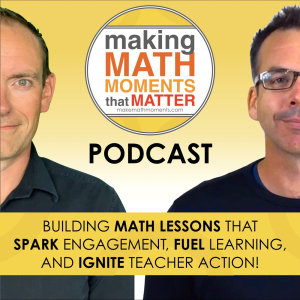
Apply to be a Featured Interview Guest
Book a Mentoring Moment Coaching Call
Are You an Official Math Moment Maker?
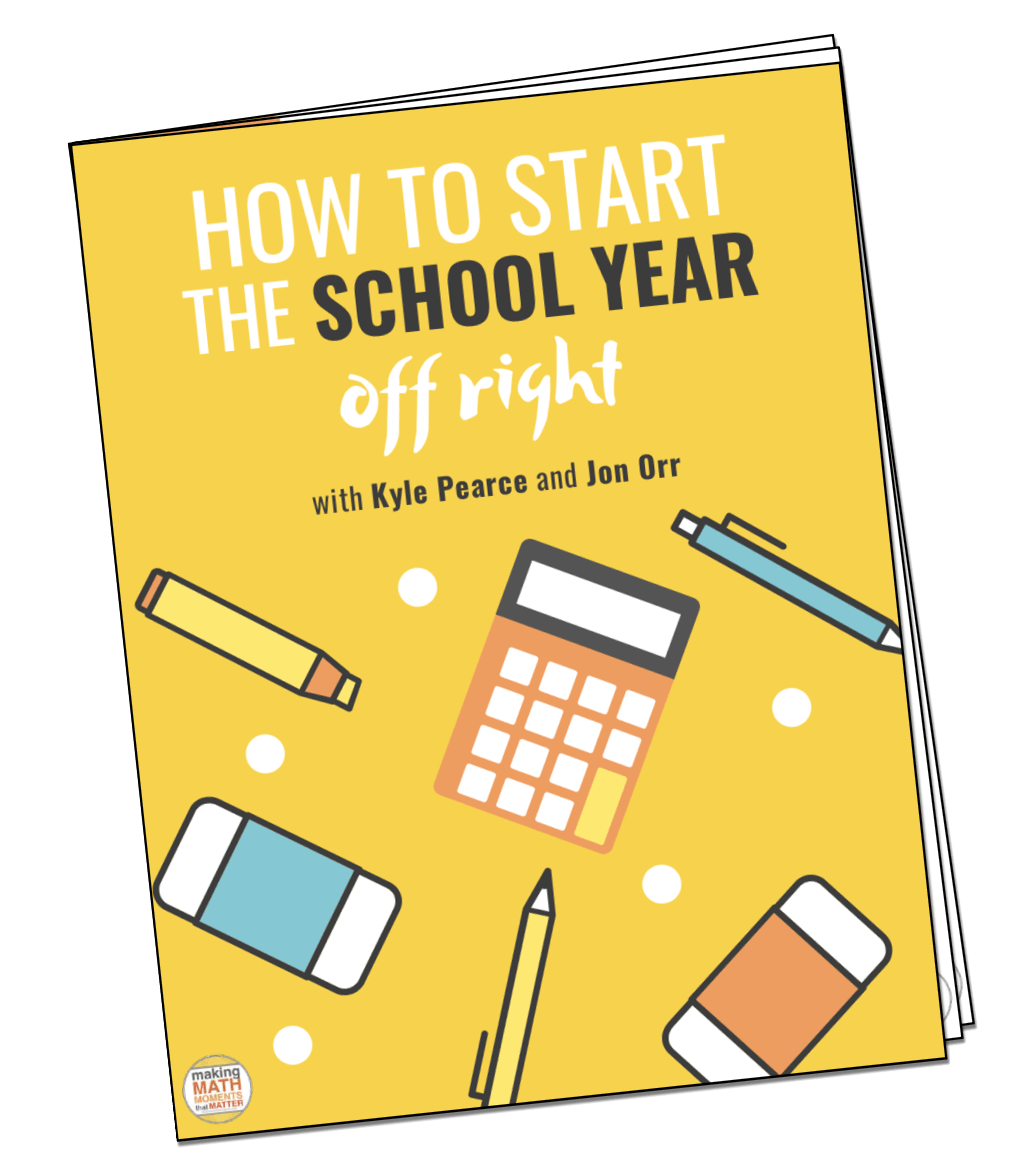
FULL TRANSCRIPT
Jon Orr: In education, think we often get opportunities for new starts. And I think you get them more often than, say, your friends, your family members who are not in education. the start of a new year in January, we start to go, hey, what are the things I’m going to do differently? It’s a new start for us. we also experience that as a new start. January.
for everyone has a new start, but in education we get the September or the August or whenever your school year starts, new start. And you think about how do I make the most success for our students this coming year? And then sometimes what happens during the year is that you may have trimesters, you may have semesters, but also you maybe all of a sudden have a class switch and you get another new start and it might not happen in January. And when we have those new starts,
we want to ask ourselves those questions. How do we set ourselves up for success? And we often talk with leaders who are planning their improvement plans and structuring PDS for teachers and growth. We talk with teachers every day about the work that they’re doing in the classrooms. And when we think about setting ourselves up for success, we’re thinking about how do we create the conditions?
to maximize student engagement, maximize student thinking happening in our classrooms. I think we all ask that as teachers is how do we get more thinking out of my students? How do we get my students going like, yes, I want to be here longer. I want to like dig into this. And there are things that we can do at the beginning of these new starts to create these conditions and give yourself the right mix so that they become easier when we’re
you know, new routines or new strategies. So that’s what we’re talking about here, folks. Let’s dive in.
Kyle Pearce: I’m really excited. I’m sure all of us, all three of us are excited to dig in here. And, you know, it’s hard not to think about yourself and what you’ve done typically each and every school year or each and every semester. If you’re, you know, switching classes midway through and you know, something that I don’t think I did, and we’re going to advocate that we start to do if you’re like me is really thinking back to
What are the things that worked well? And what are the things that maybe didn’t work out so well before we dig into the next new thing? Because I’ll be honest, I definitely like a shiny object, right? And I’m sure there’s a lot of people thinking about that as well. You think to yourself, even potentially during the previous school year, during the previous semester where you’re going, next time around, I’m gonna do this thing. But sometimes we get…
really excited about doing that thing without actually looking at what was working well and maybe what wasn’t working well because that shiny thing might be fun. It might be fantastic. It might be awesome. But the part that I don’t think I spent enough time doing or analyzing was if I do that new thing, is it going to actually move the needle in my classroom? You know, like how much time and effort is this going to take me?
in order to implement and will it actually will it actually allow me to get to the place I want to get to in my classroom or is it going to be one more thing on my list that will actually add to more stress and anxiety because we tend to like adding things to our list but boy boy is it hard to eliminate some of the things from our list in a previous year or a semester.
Yvette Lehman: Maybe this is a perfect time for our listeners to think about a stop, start, continue protocol. So if it is, you know, the end of a semester for you, you’re heading into a new semester. What do you want to, as Kyle suggested, stop doing because it’s just not serving you. Or maybe it’s become, you know, engagement has become low because it’s really mundane or needs to be shaken up a bit. What do you want to start? Because it’s something maybe that you know is best practice, but you just weren’t
in a position to implement it at the beginning of the year. You know, didn’t have the trust built, you didn’t have relationships, you didn’t have your classroom management under control. A great example of that would be, you know, small group instruction. Maybe at the beginning of the year, you didn’t feel like the conditions in the classroom were established in a way that small group was something that you could implement routinely, but now you’re 100 days into the school year and you’re ready to start.
So what do you want to start and what do you want to continue? Something that is working really well for you. It’s a high yield strategy you’ve implemented and you know that you don’t want to abandon it. So that’s kind of our suggestion as far as reflection protocol. It’s time to start thinking about what do you want to stop? What do you want to start and what do you want to continue?
Jon Orr: Yvette, is there something that you remember and inflect on and something that you’re like, okay, got to the, you know, the new start time, could be the start of the school year, could be, you know, part way through that new trimester or new semester. And you came to the realization, like, I need to stop this. Like, what did you stop? And like, how did you know that that was the thing to stop?
Yvette Lehman: So I can actually give you a perfect example. I always leverage centers or stations in my math classroom. just, that was how I was able to provide response to small group was that my students were engaged in centers or stations and it was an opportunity for them to, you know, consolidate previous skills. But I often found that, you know, mid year, sometimes those stations or centers were getting really tired.
It’s like students were tired of the stations, the engagement was no longer there, they weren’t excited to do them anymore. And so sometimes it’s like at that point in the year, was a good time for me to reflect on whether or not the way that I had my centers or stations established in the classroom, was it working? Did I need to give more to like, were the students at a point where they could have more autonomy now?
I used to start the year in a really rigid way with my stations and centres where it was very routine and students had to move in a certain way and they had to do so many in a week. And by the middle of the year, it had become so just disengaging for students that I really needed to think about whether or not it was the best use of their time. And so oftentimes at this point of the year, I would shake things up and maybe I would give more autonomy to students or more choice during centres, or I would give them the responsibility of setting goals.
to make decisions about how they were leveraging that independent practice time that may be different from the start of the year.
Kyle Pearce: Hmm. I love that. I, you know, what it makes me think about is how helpful it can be to almost create additional new starts throughout a school year or throughout a semester. So when you really think about it, there’s sort of different points in a year that can be used as sort of those starts and stops in a way, in terms of like when we start a period of time and when we end a period of time. So
whether that be a holiday, right? So for example, our US friends that usually have the Thanksgiving week off, think about how can you use that as almost like the opportunity for you to not only reflect, because you’re taking some time off, but also to think about what are we going to change when we get back to school? Because I think what we often do is we start thinking to ourselves like, boy,
this class is a handful or things have been really rough to this point. And we often think like, next time around, I’m going to do something differently, or I really need to think about what is it that I’m going to do differently next time. When in reality, imagine if we were able to do some of that now, right? If we were able to have a bit of a fresh start. And of course, we can’t come in and completely blow up all of the routines that we’ve had in our classroom.
But if you really focus in and this comes down to the reflection piece again and go like, what is it like if I could get all the way back, if I could ask the question why five times, you’ll usually get to sort of a more core reason why something is happening. So why are the kids not blank, you know, or why am I unable to blank? And if you keep asking why to that question and start getting to the root of like what fundamentally isn’t working out well,
And what would be like the small change that I might be able to make in order to try to sort of right the ship a little bit. And you know why I’m saying that is because you might be listening to this episode when it goes live, which is at a midpoint, you know, sort of a section in a North American school year. But you might also come and you might start listening to this episode during the middle of a experience with some students and you might be wondering like what
can I do differently? And I think, you know, I think this is where we have to start thinking about like, what are the classroom pillars in my classroom? So what we mean by that, if you picture that math tree that we described so often, like the trunk of your tree, sometimes what may have happened is either we forgot to sort of plant that firm trunk with like, you know, allowing it to grow really big roots,
Or we’ve allowed that tree or that trunk to sort of whittle away a little bit. You know, we’ve sort of like lost track of some of the things that we had, all the big ideas and all the big plans we had set out at the beginning of a year or a semester. We’ve sort of allowed them to sort of fall by the wayside. Why might that happen? Not because I’m not a great teacher, because I don’t care about the kids. Probably because you’re like, oh my gosh, I have so much to do and so little time.
And sometimes we need that reflection time to sort of pump the brakes and go, where are we? And how can I sort of go back to the trunk? How do I go back to that process and try to highlight some of those areas? And sometimes you might even realize that maybe there was something that you didn’t actually help prepare this class for that maybe you want to start growing now with this group of students, regardless of whether you’re changing groups or whether it’s just a sort of break in the school year.
Jon Orr: If you’ve been a long time listener, then you know that when we have, those episodes, if you look back in the catalog and see those, like how to start the school year type episodes, we do exactly what Kyle is, you know, we talk about exactly what Kyle is suggesting here is establishing, like what are the pillars or the whys of what we’re doing here in our class and making sure that students have a say into what we’re actually achieving here and starting that year off.
we would argue that put the syllabus aside, you know, if it’s the new semester or the new year, just nudge it over there for a little bit and get students into thinking about like, what is it that we want to achieve here in mathematics? Like think about your, have students to kind of reflect on what their best mathematical experiences have been and why might those have been that? And then together, what we would.
have, and this is what I used to do in my classrooms, you know, every time is establishing those pillars, like Kyle said, is what are the things that guide the decisions and the actions in the moves that we all make in this shared space? And, you know, three of the pillars that I used to always bring out, because I knew I wanted these pillars to be in my classroom, you know, prompting your students in certain ways so that these pillars would come out is, you know, what we were saying, like, we want to value growth, we want to value collaboration.
and we want to value challenge. And it was like, those three help explain everything that we did in the class. Why are we doing random grouping? Because collaboration is extremely important for us to feel safe and valued with the people that are in our classrooms. So we are going to randomly group each other so that we work with different people every single day to feel comfortable. Like that is in a pillar of the work we do and it helps define why we do what we do in the classroom.
You know, why, why, why should I maybe not go to the bathroom right now? You know, during this part of the lesson? Well, let’s reflect back to the pillar, you know, collaboration in group work and the work that we’re doing here with our individuals and teammates is extremely important as one of our values. And when we kind of opt out and try to like, I’m, I’m, I’m referring to like, when can you know, you know, when I’m talking about kids try to like, I’m going to go to the bathroom, sir. Right, right. That’s what I’m thinking about. I should have clarified there like,
Kyle Pearce: the routine bathroom goer.
Jon Orr: So it’s like, but it’s like, do you really need to go or you know, is it, is it, we need to reflect back on like how to give the value and the attention to your teammates because collaboration is important in math learning or like, why are we starting class with a prompt and a problem versus me just telling you how to do it? Cause the kids will ask those questions and then you’re going like, well, remember that we valued growth and we valued challenge. So if we value challenge in thinking,
then we want to make sure thinking becomes the forefront of the work that we start with so that we do more thinking here because that’s better for the, you know, how you’re going to learn mathematics, but also how you can, you know, understand the mathematics. So all of these things kind of come back to the pillars. So establishing your why’s, their why’s, making sure that you’re all kind of, you know, gelling on say the work that’s going to happen here. Extremely important because then it can set the stage for
when a new routine comes in. And again, they become filters for these other things. Because if it’s like, okay, I want to start this new routine, you now have to ask yourself that does it fit with the three pillars or the four pillars, how many of pillars you have so that the class experience moves the way it does? Because if it conflicts, then you’re like, okay, well that…
maybe next semester, or maybe I have to adjust a pillar and we have to have that conversation so that this will fit. Or maybe this doesn’t work right now and I don’t want to exclude that routine because it’s not one of the pillars that we to get collaboratively have developed here in the room. So those pillars are really essential to create that culture you’re after. So which means really you’re just defining like what kind of culture do I want to create here? A lot of times we go into our school years and don’t, we don’t kind of.
think about that. We just think that we’re going to have this culture and we don’t kind of carefully map out what culture we want to have.
Yvette Lehman: John, you brought up a great point about leveraging student voice through this process. So when we think about that reset or that protocol of Stop Start Continue, are we having that conversation with students? Are they getting input? And are they able to talk to you about what is working for them, what is not? And are we gathering their input in this process that they feel a sense of, you know,
their voice is being valued in the math classroom. But I wonder if there’s value in engaging in this protocol, this stop, start, continue protocol at two different tiers. So can we look at it as a classroom? So as a classroom community, what’s working for us? What do we want to have more of, like really engaging that reflection? I can reflect on that myself as a teacher, but then can students also have this opportunity to see the new semester or a transition during the year as a
a refresh or reset? Can they think about their personal habits in the math classroom and identify things that they want to stop, start and continue? It’s almost like if you have a student who, you know, presents a certain way in the math classroom, is this a chance for them to maybe curb some of those behaviors or adjust their contributions? Or maybe they were super shy and it’s like they’re going to make a commitment that they’re going to start contributing more. And how do we support students in
that the goal setting for the new semester. So I think you brought up again, like this really great point about this is for us as the professional to make changes that we know are going to support us and being more effective. But it’s also about building up our students, helping them have ownership of their learning and helping them maximize these natural transitions as well for a fresh start and a new kind of new perspective on the learning ahead.
Kyle Pearce: I love that. And I think by including students, now it’s an us move here, right? We’re trying to make it better for everyone here. You’re giving those students another opportunity to sort of reset on their end as well, and also sort of shake the routine. I think, I always pictured this as a former high school teacher, would, especially in the first semester here in Canada, here in Ontario,
We’d have that last three weeks of the school year or of the, should say the semester was after our Christmas or our holiday or winter holiday break. And we would come back and I always felt for a long time before sort of thinking about some of these things and in sort of doing this reset that things got really stale. You you started got to that end point in the year where it became more about reviewing and
sort of coming back to old concepts. And really, what we want to do is we want to reignite that student motivation. And the only way we’re going to get our students to either stay motivated or to actually help sort of give them the jolt that maybe they need is by us sort of heading up this reset, right? Like if we just sort of show back up and it’s sort of everybody’s kind of dragging a little bit, we’re all a little bit out of energy.
Like it has to start with us in order to rally the troops, right? Like you are the leader in that classroom and it’s like, boy, boy, it could be so hard. It could be so exhausting, but it’s like, what are we going to do for this final push so that we can keep things moving along? And you know, if you’re listening to this as you’re starting a school year, right? It’s like you usually that sort of natural at the beginning of a school year, at the beginning of a semester, you’re excited, you’re motivated.
Well, now it’s like one of the things I think you want to be doing is sort of thinking to yourself, maybe even setting a reminder after maybe that first check-in point or the official progress report or the report card or whatever to sort of remind you to sort of lift your head up, sort of have a look around and go, what am I happy about and what do I want to sort of reset or reframe here? And I think
we are intentional about this from the very beginning, we can actually potentially, you know, front run the idea of maybe the semester getting a little boring or the class getting a little bit, you know, sort of tired. So prepare that right from the beginning so that you sort of know that, Hey, there’s going to be a need for me to sort of step up and try to shift things a little bit at some point here. So let’s make sure that we’re aware of it and that if possible, can we
Kyle Pearce: Can we do this work ahead of things maybe getting tired or getting stale with our students?
Jon Orr: Right. And in a way that I used to shake things up like that is, you know, when you’re teaching and say, say a unit based structure, you know, where it’s like, we’re talking about this strand or we’re talking, you know, we’re going to be spending this two week period on, this topic or this unit or the strand that can be a great place when we all of sudden we have a strand switch and we’re going to go from this to this or unit from one to two. And you.
you can structure that in the middle of the year to have that switch up because it makes sense that you now get a new start in the unit. So it’s a new start in the unit to be like this unit, we’re gonna model it and do it this way. it’s like, because a lot of times you’ll talk to teachers and say like, am having, you went to a conference or you had a great coaching session, you wanna bring that routine in, it fits with your pillars.
And then you’re like, it’s kind of shake things up. Like I heard that with like random grouping and building thinking classrooms. It was like, well, we didn’t start that way. So it’s hard to like start now, but that’s where that unit shakeup could happen. Where like the beginning of a unit or a strand is now let’s just say this unit, we’re going to do this and actually kind of be freeing to you because you’re not committing a whole year to kind of going, I’m going to always do this. It’s like this chunk of time we’re going to.
Um, we’re going to learn or we’re going to structure the, the, the, the classroom, or we’re going to structure a couple of routines differently, um, during this two week block. And then, and then you can test it out. And, but then you all of a sudden might realize that that changed the culture of that two weeks. You’re like, let’s just keep rolling, you know, Oh, we’re to do it again with this two week period, or we’re going to switch back to a different, say, say a set of routines or a set of set of, uh, you know, procedures of classroom environment.
in that block, but that can be a great kind of next step if you’re starting in the middle of year.
Kyle Pearce: So, you know, I’m thinking here I could probably go all day and chat about this all day with you both. But we do know that a lot of people listening, you know, they’re maybe getting to that parking lot, you know, on their way into the classroom on a Monday morning or whatever it is. So and there’s been a lot of great ideas here that I hope, folks, if you need to, you can always rewind to listen again to sort of pick up some of these ideas because hopefully something’s resonating with you.
But for those who are only able to listen to this one time and you’re going like what, like what would each of these individuals do if they could only maybe do one actionable thing as you’re starting off a school year? We’ll go around the table here. We’re gonna start with Yvette. Yvette, if you could recommend one thing to educators or this could be math leaders as well who want to start off their semester or their school year strong, what would it be for you?
Yvette Lehman: I would encourage everybody to commit to the stop, start, continue protocol. And it’s almost like commit to doing it today. Like actually on your break today during your prep period, start jotting down some ideas of what you want to stop, start and continue and think about how you might bring this protocol to your students this week.
Kyle Pearce: I love it. How about John?
Jon Orr: I would, hey, you know me, I’m gonna rely on those pillars, right? Like if I haven’t clearly defined what it is I’m really after in terms of the type of experience I want my students to have in my classroom and what the values I want to convey about the work that we do here, the why, you said that, Kyle. I wanna craft what those pillars are. These are the things that help guide decisions and structures and moves and routines and assessment.
You know, we want to have that clear picture so that we can shape the work that we do and students can hear it, students can be part of it. And then that can really guide whether, you know, you’re creating the culture you want so that you can be flexible during the year.
Kyle Pearce: Now, we intentionally did not share what we were going to say here. based on what I’m hearing, I’m hearing like Yvette’s got sort of this like plan ahead idea here, right? The stop, start, continue ideas, like really reflecting and sort of thinking about what’s working, what maybe isn’t working the way you’d like. John, you’re talking about like, OK, we need to create these pillars. We need to make sure students know what it is that we’re doing here. It’s not just answer getting in math class. I love it.
So what I’m going to talk about here, and it’s going to kind of build on all three. So you’ve got like sort of three ideas that are all interconnected here is how we do this. You know, what I know John doesn’t do when he goes in to talk about the pillars is he doesn’t present to the students the pillars, you know, for a whole day, like reading off the syllabus. It’s like, do it through the mathematics. So what I want you thinking about is like, how do we make mathematics sort of the center of this work that we’re doing without forgetting?
about all of these other pieces. So we can introduce hard, challenging, problem-based lessons to our students. And throughout those lessons, we wanna help make those connections so students can start to see these pillars emerging and you will see just the energy sort of shift in your math classroom. And I’m telling you right now, if you can start it strong and then…
Set those reminders, don’t forget, you know, it’s not a set and then forget. It’s like, we’ve got to come back to them. We need to reflect on them as well. I think you’ve got some big ideas, some great ideas here. Remember, you can’t do everything all at once, but pick something where you want to start and then you can start to build from there. We’re hoping that this is helping you start off this next semester, right? Or potentially helping you reset at whatever stage of the school year you’re in right now.
Jon Orr: We gave you some call to actions there and we have two more here for you. One, we talked about the elements of the tree. We talked about the pillars being the trunk of the tree. We talked about some other elements of the tree here. We believe there are six components of effective classrooms and strengthening all six is essential if we’re going to create the thinkers that we want in our math classrooms. If you want to kind of go with
Take a deeper dive into those six and get support on each of those six and learn about each of those six. Then we encourage you to head on over to makemathmoments.com forward slash grow, makemathmoments.com forward slash grow, fill out our quick assessment on the six components and you’ll get a report which gives you some next steps and some actual items. The second call to action here to kind of end this episode is if you’ve listened to episodes before, we encourage you to hit that review, rating and review button.
We read all those ratings, we read all those reviews, we encourage you to leave that so that we can see the impact that we’re trying to make in math education. If this is your first episode and you landed on this one as your very first, then hit that subscribe, hit that follow button so you get notified when we put out our episodes. We’re putting out two episodes each week, Mondays and Thursdays, so you don’t miss those episodes.
Thanks For Listening
- Book a Math Mentoring Moment
- Apply to be a Featured Interview Guest
- Leave a note in the comment section below.
- Share this show on Twitter, or Facebook.
To help out the show:
- Leave an honest review on iTunes. Your ratings and reviews really help and we read each one.
- Subscribe on iTunes, Google Play, and Spotify.
DOWNLOAD THE 3 ACT MATH TASK TIP SHEET SO THEY RUN WITHOUT A HITCH!
Download the 2-page printable 3 Act Math Tip Sheet to ensure that you have the best start to your journey using 3 Act math Tasks to spark curiosity and fuel sense making in your math classroom!
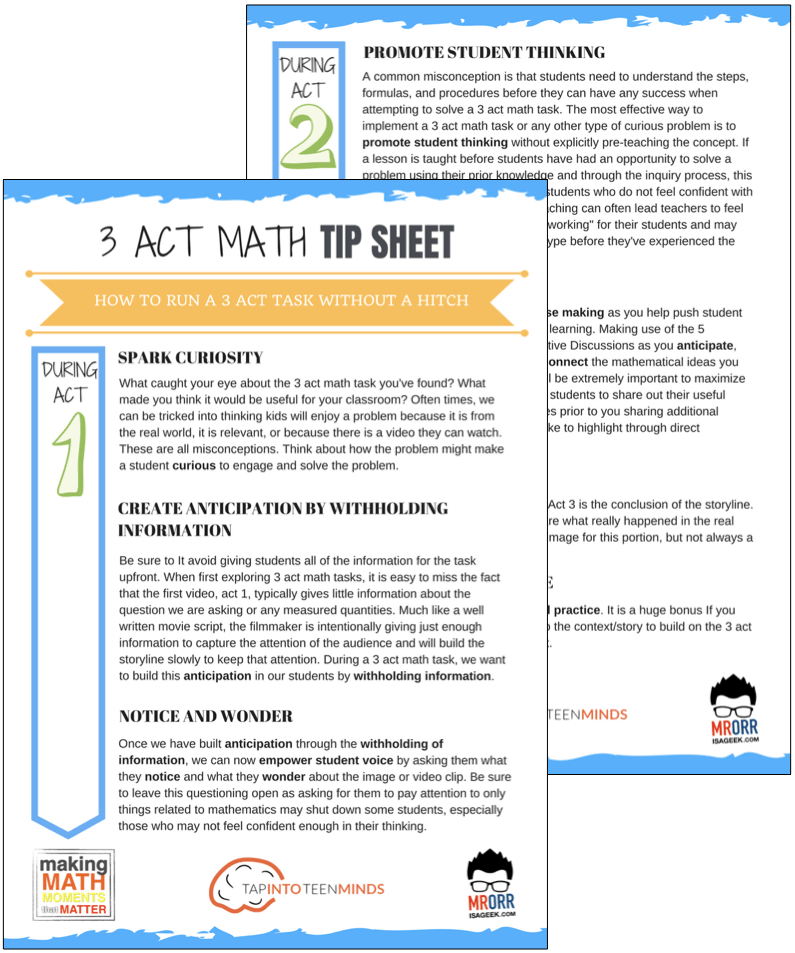
LESSONS TO MAKE MATH MOMENTS
Each lesson consists of:
Each Make Math Moments Problem Based Lesson consists of a Teacher Guide to lead you step-by-step through the planning process to ensure your lesson runs without a hitch!
Each Teacher Guide consists of:
- Intentionality of the lesson;
- A step-by-step walk through of each phase of the lesson;
- Visuals, animations, and videos unpacking big ideas, strategies, and models we intend to emerge during the lesson;
- Sample student approaches to assist in anticipating what your students might do;
- Resources and downloads including Keynote, Powerpoint, Media Files, and Teacher Guide printable PDF; and,
- Much more!
Each Make Math Moments Problem Based Lesson begins with a story, visual, video, or other method to Spark Curiosity through context.
Students will often Notice and Wonder before making an estimate to draw them in and invest in the problem.
After student voice has been heard and acknowledged, we will set students off on a Productive Struggle via a prompt related to the Spark context.
These prompts are given each lesson with the following conditions:
- No calculators are to be used; and,
- Students are to focus on how they can convince their math community that their solution is valid.
Students are left to engage in a productive struggle as the facilitator circulates to observe and engage in conversation as a means of assessing formatively.
The facilitator is instructed through the Teacher Guide on what specific strategies and models could be used to make connections and consolidate the learning from the lesson.
Often times, animations and walk through videos are provided in the Teacher Guide to assist with planning and delivering the consolidation.
A review image, video, or animation is provided as a conclusion to the task from the lesson.
While this might feel like a natural ending to the context students have been exploring, it is just the beginning as we look to leverage this context via extensions and additional lessons to dig deeper.
At the end of each lesson, consolidation prompts and/or extensions are crafted for students to purposefully practice and demonstrate their current understanding.
Facilitators are encouraged to collect these consolidation prompts as a means to engage in the assessment process and inform next moves for instruction.
In multi-day units of study, Math Talks are crafted to help build on the thinking from the previous day and build towards the next step in the developmental progression of the concept(s) we are exploring.
Each Math Talk is constructed as a string of related problems that build with intentionality to emerge specific big ideas, strategies, and mathematical models.
Make Math Moments Problem Based Lessons and Day 1 Teacher Guides are openly available for you to leverage and use with your students without becoming a Make Math Moments Academy Member.
Use our OPEN ACCESS multi-day problem based units!
Make Math Moments Problem Based Lessons and Day 1 Teacher Guides are openly available for you to leverage and use with your students without becoming a Make Math Moments Academy Member.
Partitive Division Resulting in a Fraction
Equivalence and Algebraic Substitution
Represent Categorical Data & Explore Mean
Downloadable resources including blackline masters, handouts, printable Tips Sheets, slide shows, and media files do require a Make Math Moments Academy Membership.
ONLINE WORKSHOP REGISTRATION
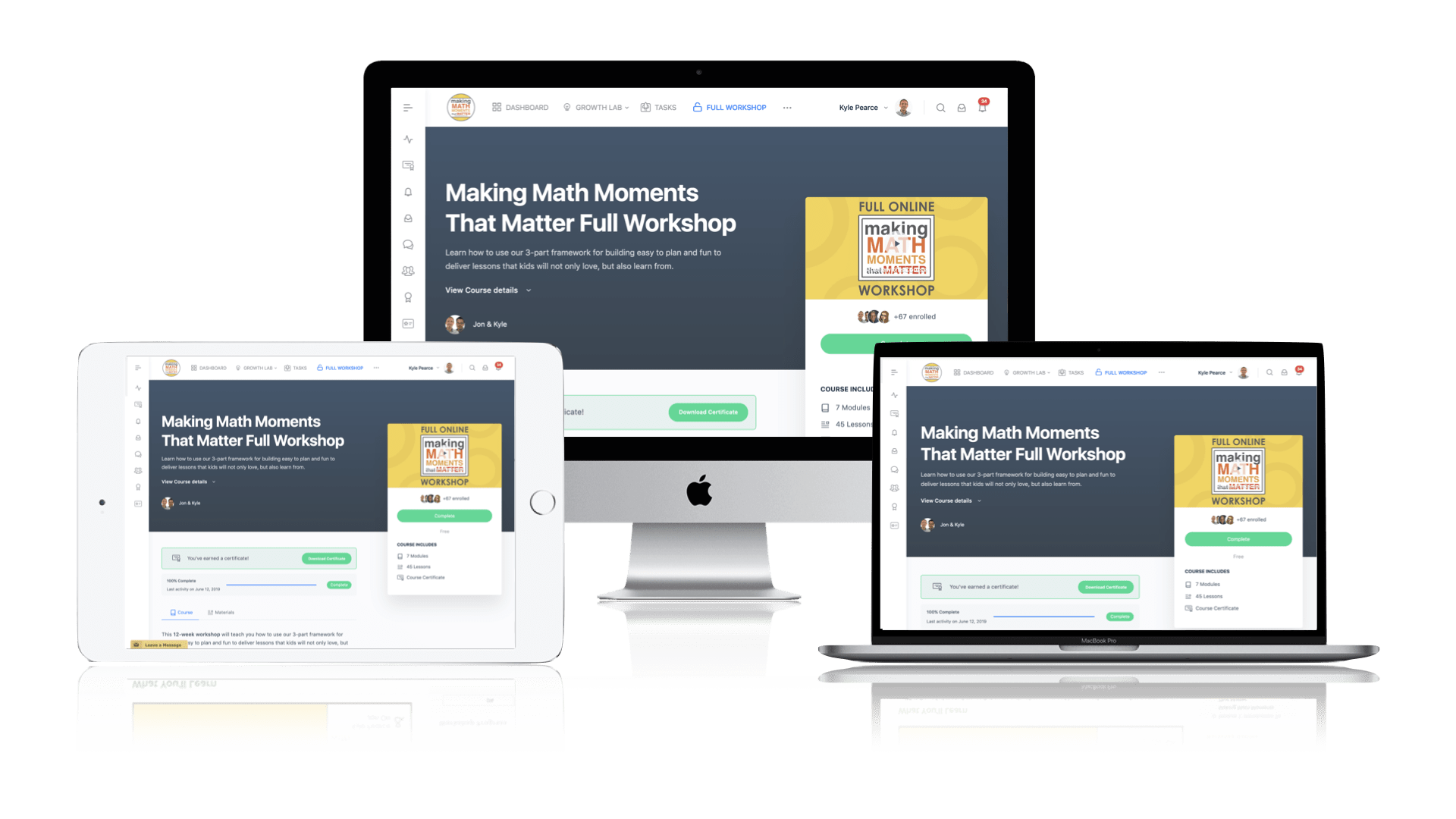
Pedagogically aligned for teachers of K through Grade 12 with content specific examples from Grades 3 through Grade 10.
In our self-paced, 12-week Online Workshop, you'll learn how to craft new and transform your current lessons to Spark Curiosity, Fuel Sense Making, and Ignite Your Teacher Moves to promote resilient problem solvers.
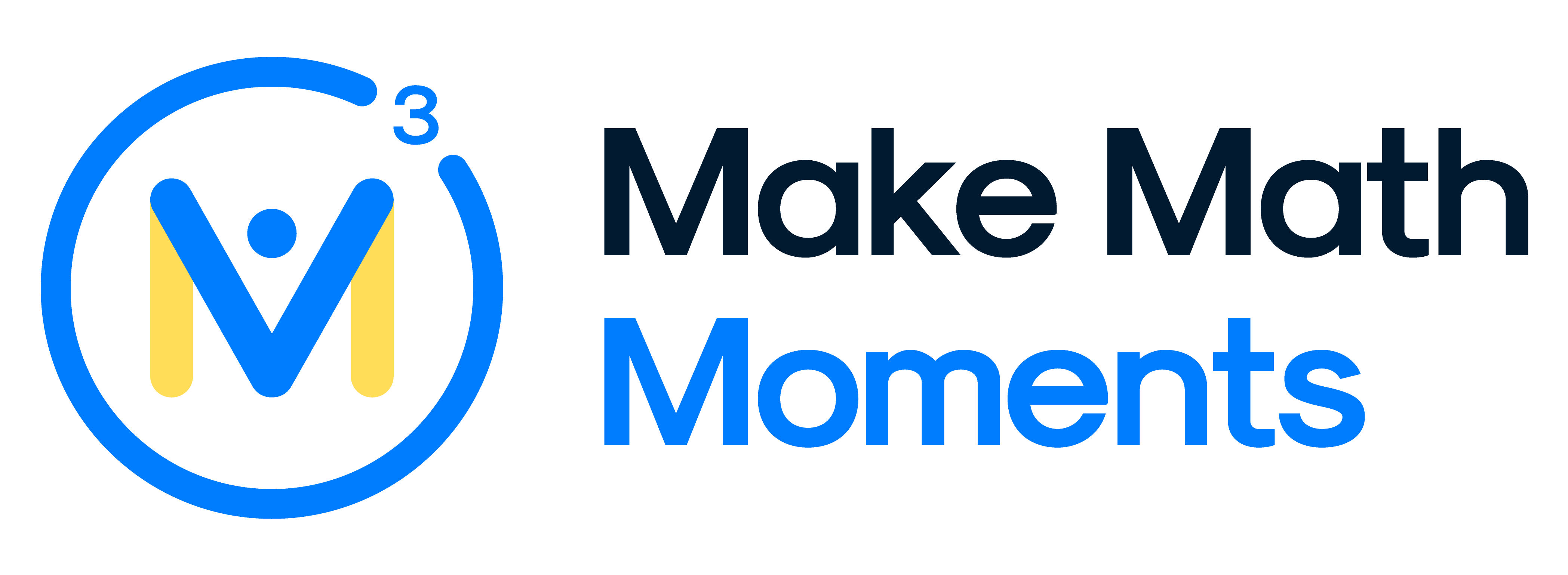



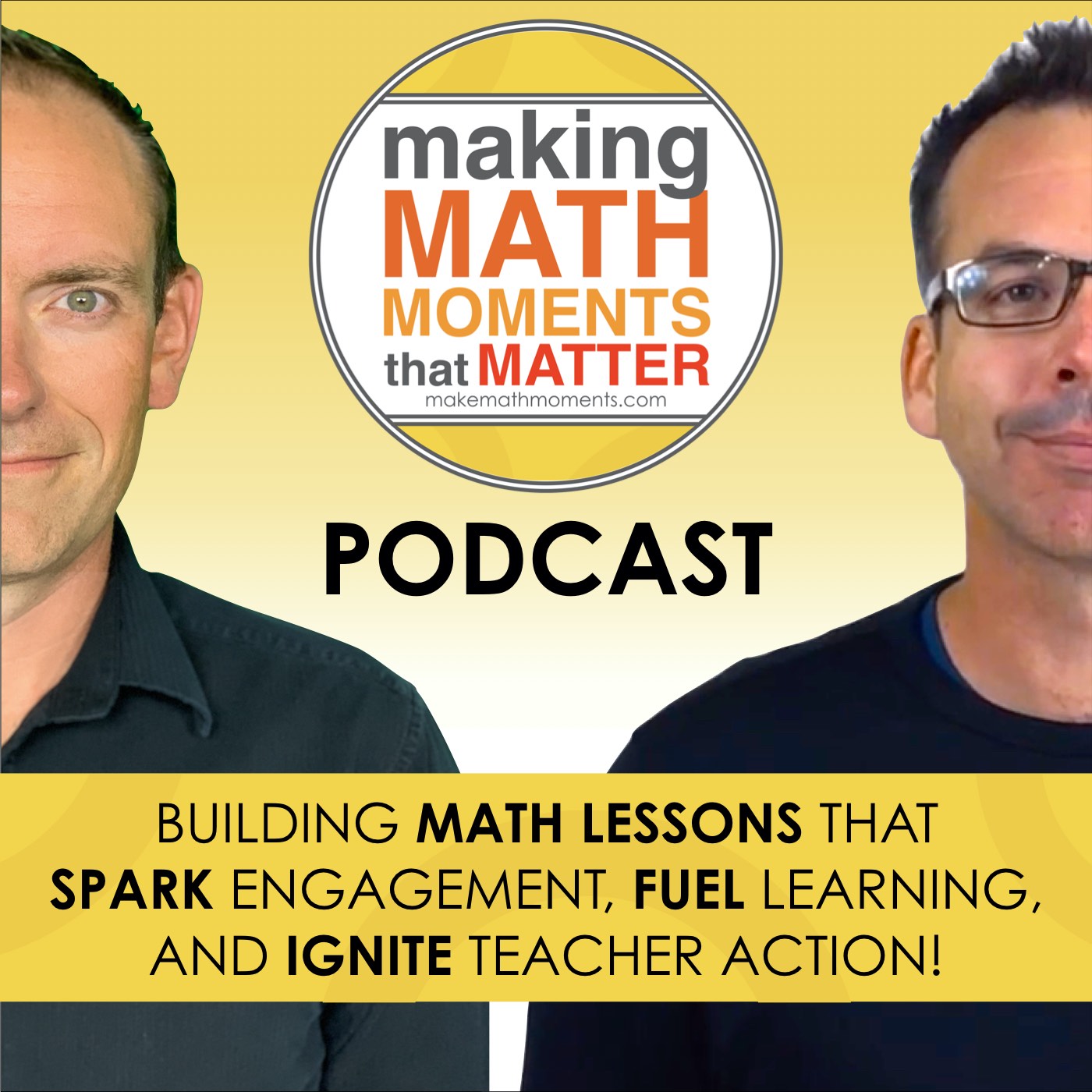
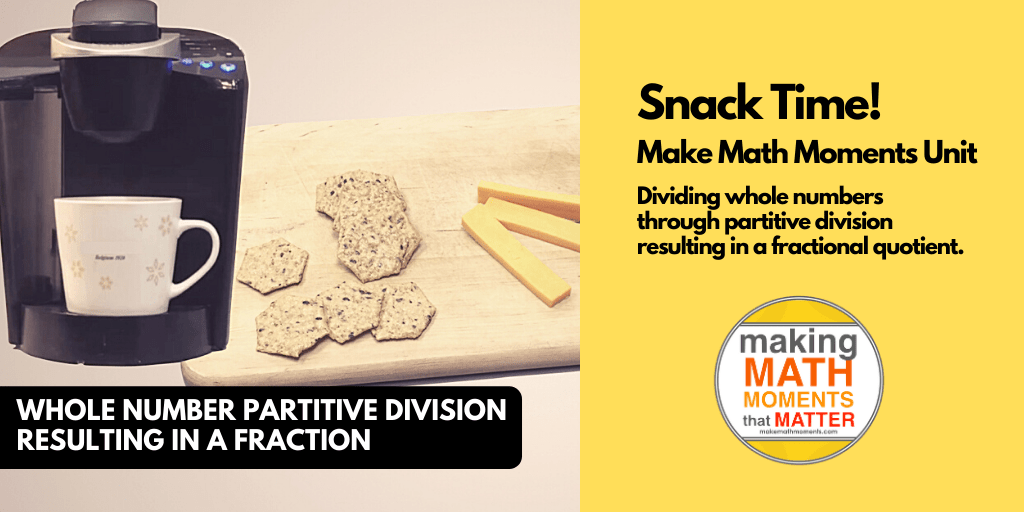
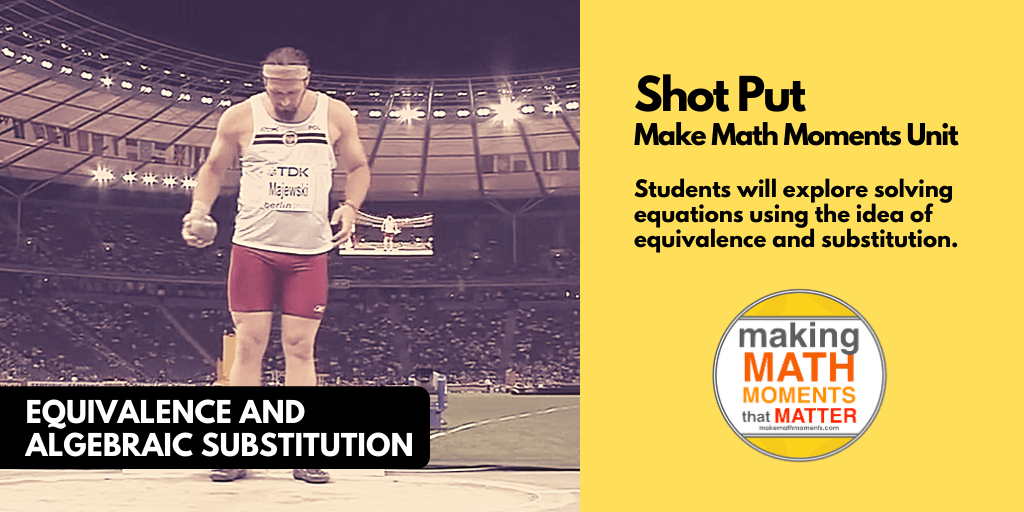
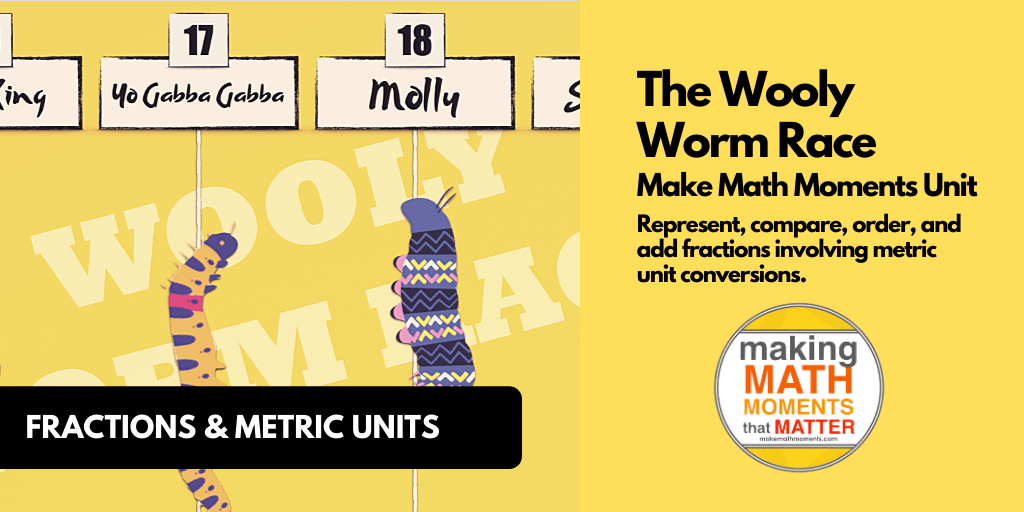
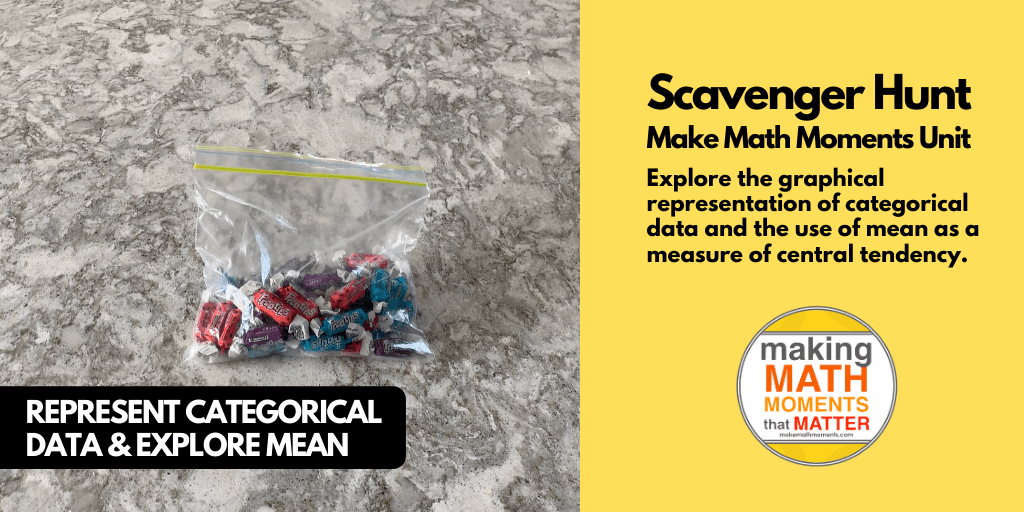
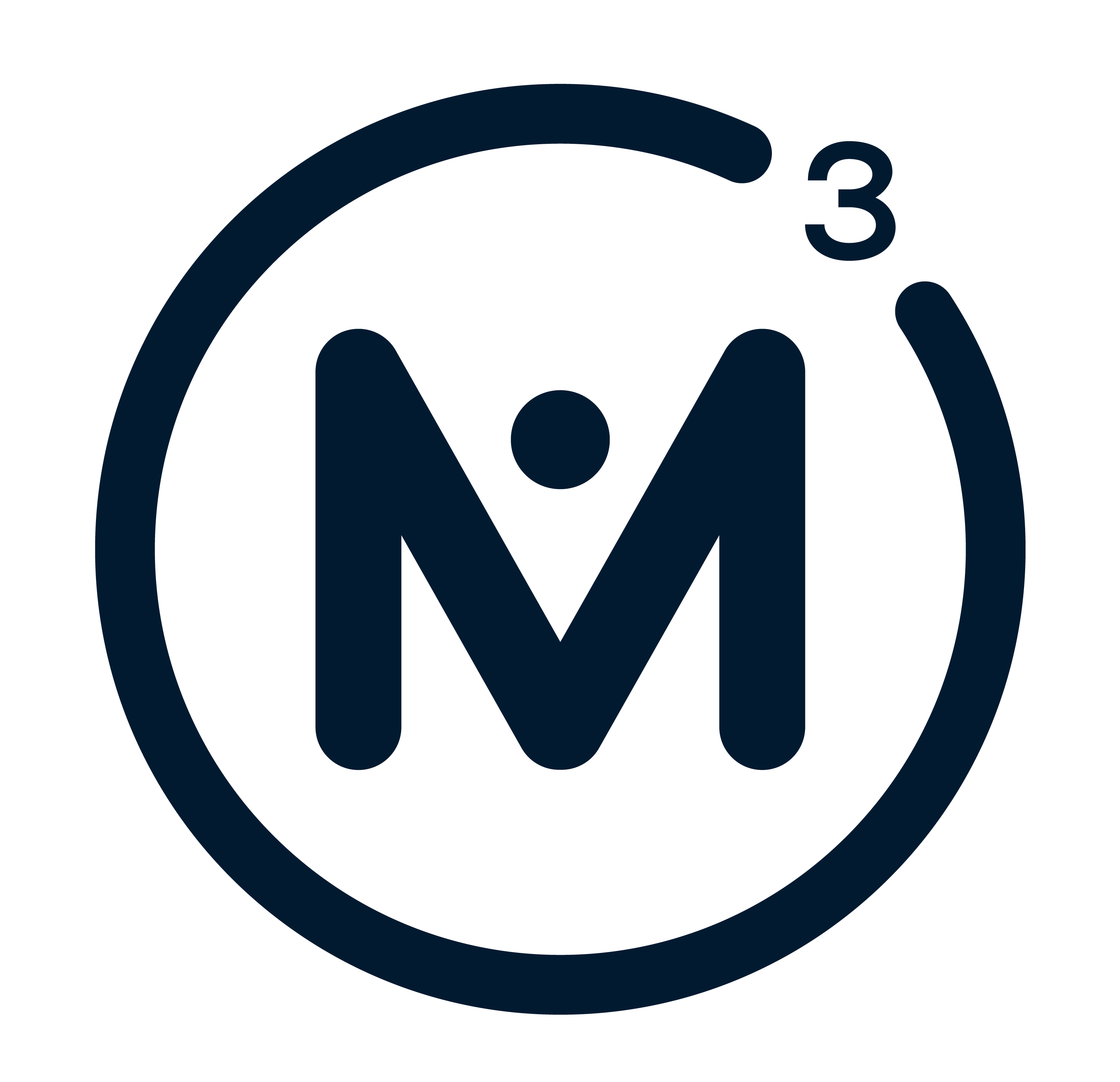
0 Comments